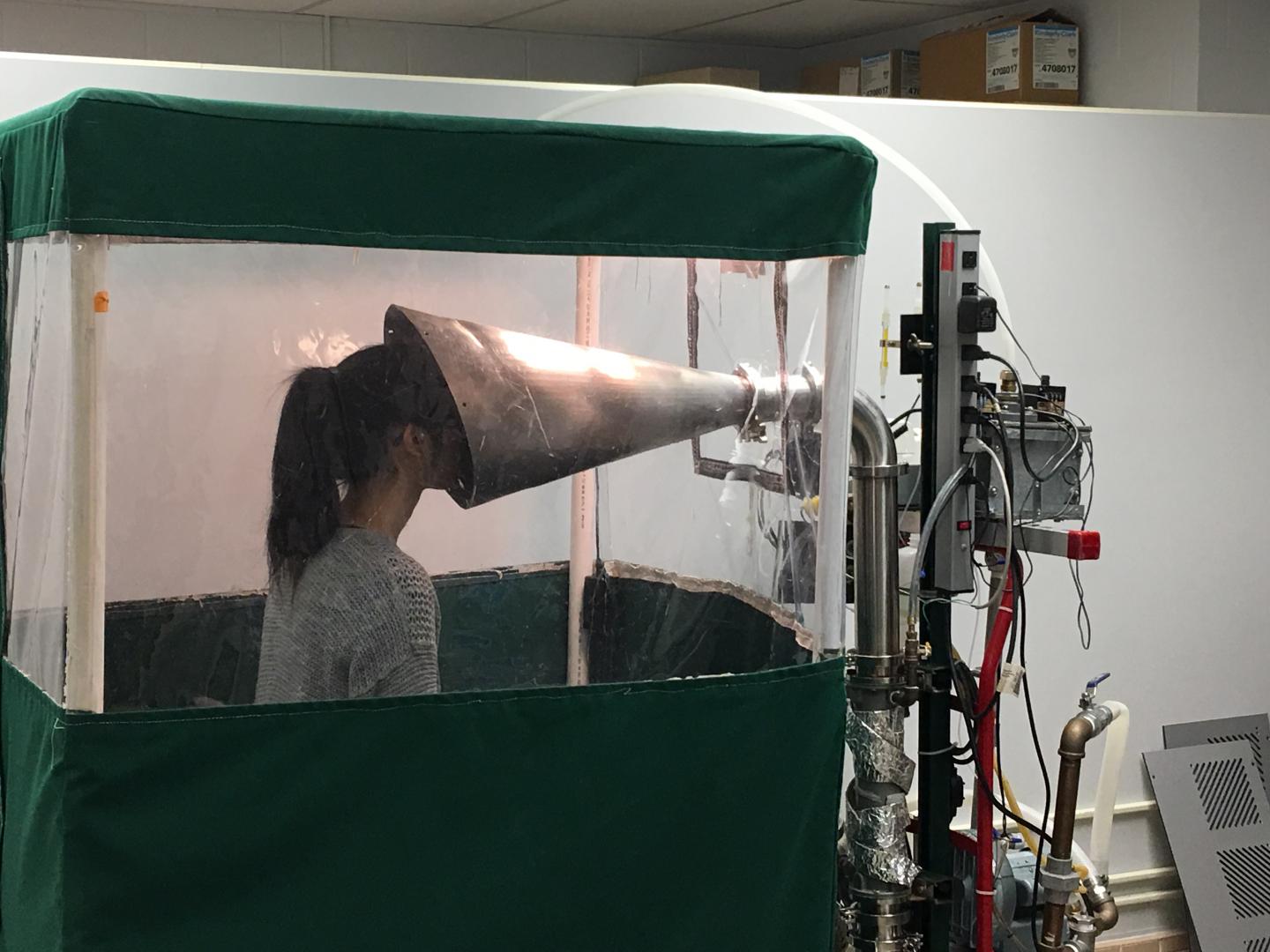In laboratory experiments, the masks significantly reduced the amounts of various airborne viruses coming from infected patients, measured using the breath-capturing “Gesundheit II machine” developed by Dr. Don Milton, a professor of applied environmental health in the University of Maryland School of Public Health and a senior author of the study published April 3 in the journal Nature Medicine.
Milton has already conferred with federal and White House health officials on the findings, which closely follow statements this week from the head of the Centers for Disease Control and Prevention saying the agency was reconsidering oft-stated advice that surgical masks aren’t a useful precaution outside of medical settings. (The debate takes place at a time when clinicians themselves face dangerously inadequate supplies of masks–a shortfall other UMD researchers are scrambling to help solve.)
The question of masks has roiled society as well, with some retailers refusing to let employees wear them for fear of sending negative signals to customers, and cases of slurs and even physical attacks in the United States and elsewhere against Asians or Asian Americans who were wearing masks, a measure some consider a necessity during a disease outbreak.
The study, conducted prior to the current pandemic with a student of Milton’s colleagues on the Faculty of Medicine at the University of Hong Kong, does not address the question of whether surgical masks protect wearers from infection. It does suggest that masks may limit how much the infected–who in the case of the novel coronavirus often don’t have symptoms–spread diseases including influenza, rhinoviruses and coronaviruses.
Milton, who runs the Public Health Aerobiology, Virology, and Exhaled Biomarker Laboratory in the School of Public Health, demonstrated in a 2013 study that surgical masks could help limit flu transmission. However, he cautions that the effect may not be as great outside of controlled settings.
Nevertheless, he said, the chance they could help justifies taking a new look at whether all people should be encouraged to wear them when they venture out of their houses to stores or other populated locations during the current COVID-19 lockdown.
“In normal times we’d say that if it wasn’t shown statistically significant or the effective in real-world studies, we don’t recommend it,” he said. “But in the middle of a pandemic, we’re desperate. The thinking is that even if it cuts down transmission a little bit, it’s worth trying.”
Previous studies have shown that coronavirus and other respiratory infections are mostly spread during close contact, which has been interpreted by some infectious disease specialists to mean that the disease could spread only through contact and large droplets, such as from a cough or sneeze–a message that has often been shared with the public.
“What they don’t understand is that is merely a hypothesis,” Milton said. The current study (along with earlier ones) shows, by contrast, that tiny, aerosolized droplets can indeed diffuse through the air. That means it may be possible to contract COVID-19 not only by being coughed on, but by simply inhaling the breath of someone nearby who has it, whether they have symptoms or not. Surgical masks, however, catch a lot of the aerosolized virus as it’s exhaled, he said.
The study was conducted at the University of Hong Kong as part of the dissertation research of the lead author, Dr. Nancy Leung, who, under the supervision of the co-senior authors Drs. Cowling and Milton, recruited 246 people with suspected respiratory viral infections. Milton’s Gesundheit machine compared how much virus they exhaled with and without a surgical mask.
“In 111 people infected by either coronavirus, influenza virus or rhinovirus, masks reduced detectable virus in respiratory droplets and aerosols for seasonal coronaviruses, and in respiratory droplets for influenza virus,” Leung said. “In contrast, masks did not reduce the emission of rhinoviruses.”
Although the experiment took place before the current pandemic, COVID-19 and seasonal coronaviruses are closely related and may be of similar particle size. The report’s other senior author, Professor Benjamin Cowling, division head of epidemiology and biostatistics, School of Public Health, HKUMed, and co-director of the World Health Organization Collaborating Centre for Infectious Disease Epidemiology and Control, said, “The ability of surgical masks to reduce seasonal coronavirus in respiratory droplets and aerosols implies that such masks can contribute to slowing the spread of (COVID-19) when worn by infected people.”
Milton pointed to other measures his research has found is even more effective than masks, such as improving ventilation in public places like grocery stores, or installing UV-C lights near the ceiling that works in conjunction with ceiling fans to pull air upwards and destroy viruses and bacteria.
“Personal protective equipment like N95 masks are not our first line of defense,” Milton said. “They are our last desperate thing that we do.”
###
Hong Kong University contributed to this report.
Original post https://alertarticles.info




